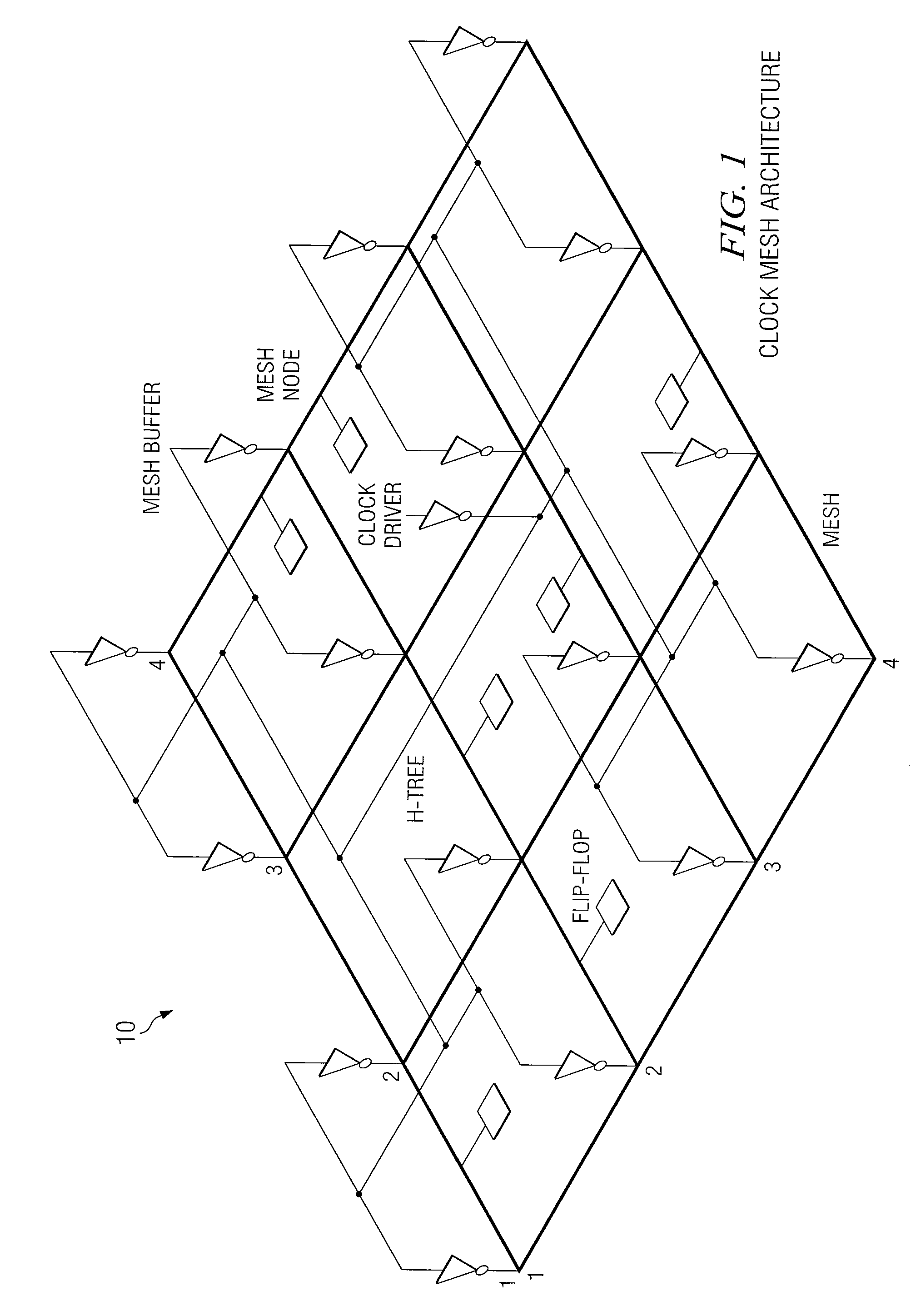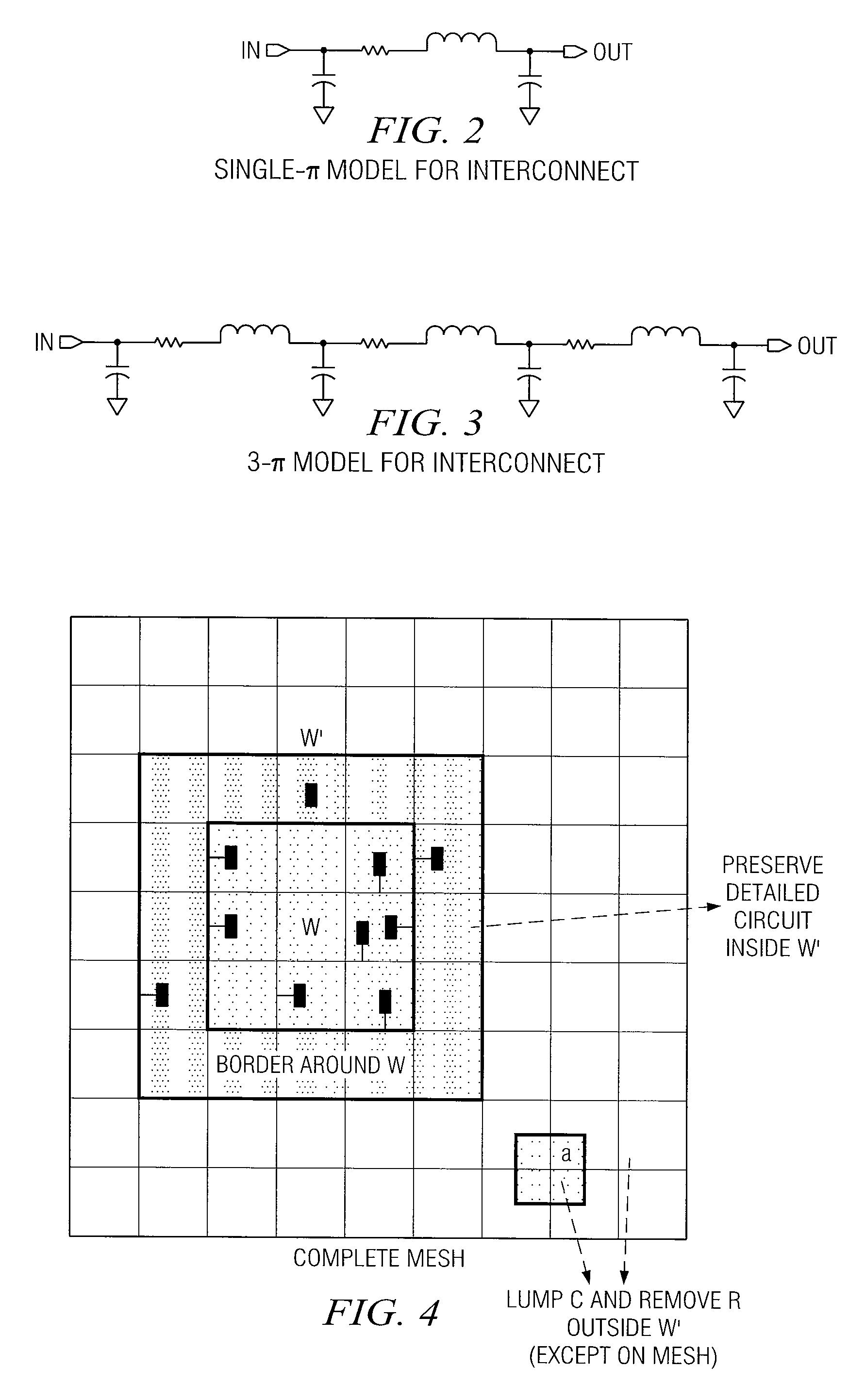System and method for providing an improved sliding window scheme for clock mesh analysis
a clock mesh and sliding window technology, applied in the field of clock meshes, can solve the problems of limited applicability of mesh architecture, high computational intensity, image processing, video processing etc., and achieve the effect of reducing or eliminating problems and disadvantages
- Summary
- Abstract
- Description
- Claims
- Application Information
AI Technical Summary
Benefits of technology
Problems solved by technology
Method used
Image
Examples
Embodiment Construction
[0022]FIG. 1 is a simplified diagram of a typical or example mesh architecture system 10 used for distributing a clock signal from a phase lock loop (PLL) or root buffer to sequential elements such as flip-flops (FFs) and latches on the chip. It has three main components: 1) a (uniform) mesh, 2) a global buffered tree that drives the mesh, and 3) local interconnect, which connects the clock inputs of FFs directly to the nearest point on the mesh. The mesh is a uniform rectangular grid of wires spanning the entire chip area, driven by the mesh buffers and propagating the clock to the FFs. An m×n mesh or grid has m rows (horizontal wires) and n columns (vertical wires). The size of the mesh is m×n. For a given chip size, the greater the mesh size, the more fine-grain the mesh is. A mesh node (or grid node) is the point where each row is connected to each column. As shown in FIG. 1, the global (H−) tree delivers the clock signal to the mesh nodes via buffers called mesh buffers. We ass...
PUM
 Login to View More
Login to View More Abstract
Description
Claims
Application Information
 Login to View More
Login to View More - R&D
- Intellectual Property
- Life Sciences
- Materials
- Tech Scout
- Unparalleled Data Quality
- Higher Quality Content
- 60% Fewer Hallucinations
Browse by: Latest US Patents, China's latest patents, Technical Efficacy Thesaurus, Application Domain, Technology Topic, Popular Technical Reports.
© 2025 PatSnap. All rights reserved.Legal|Privacy policy|Modern Slavery Act Transparency Statement|Sitemap|About US| Contact US: help@patsnap.com



